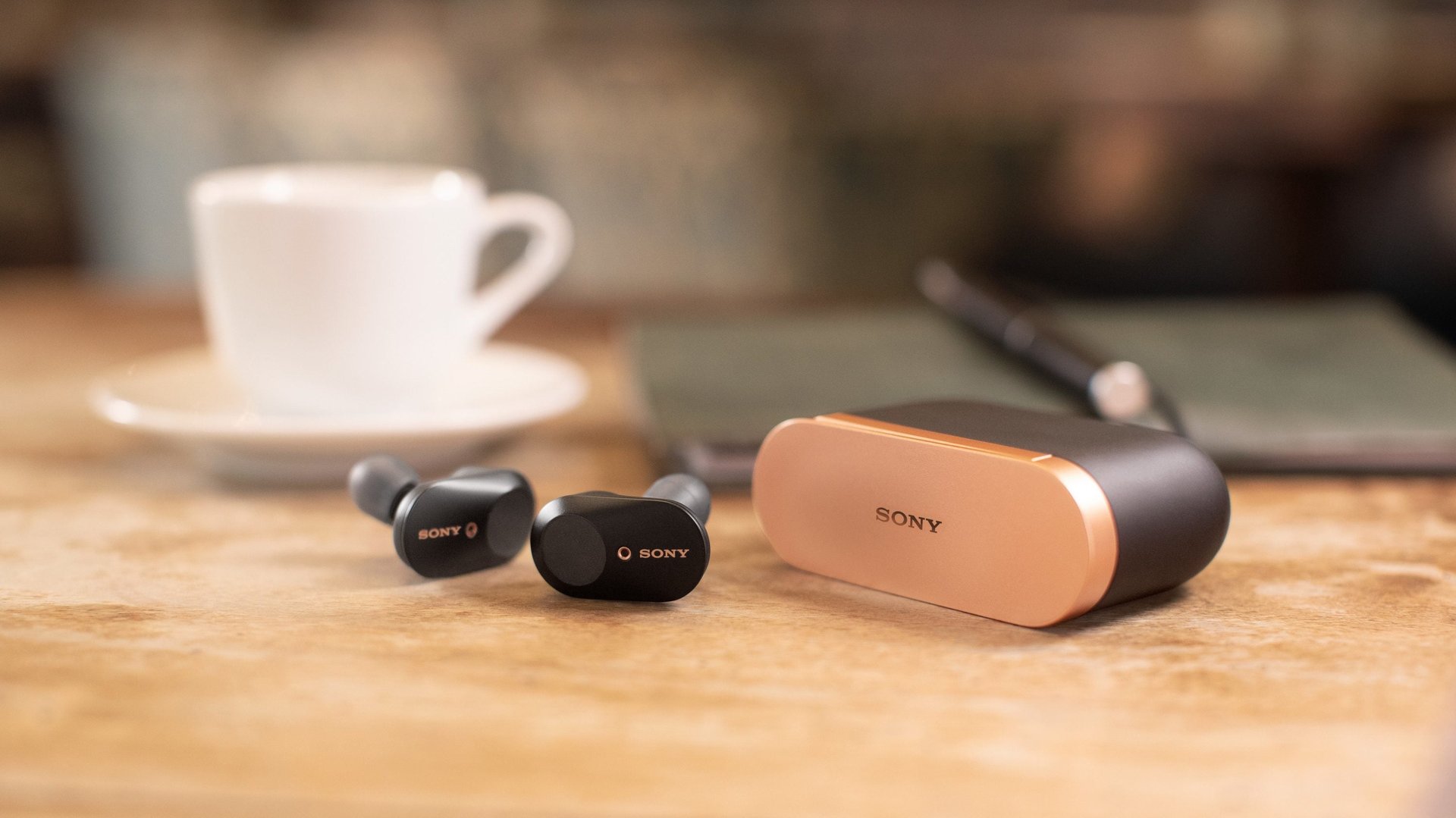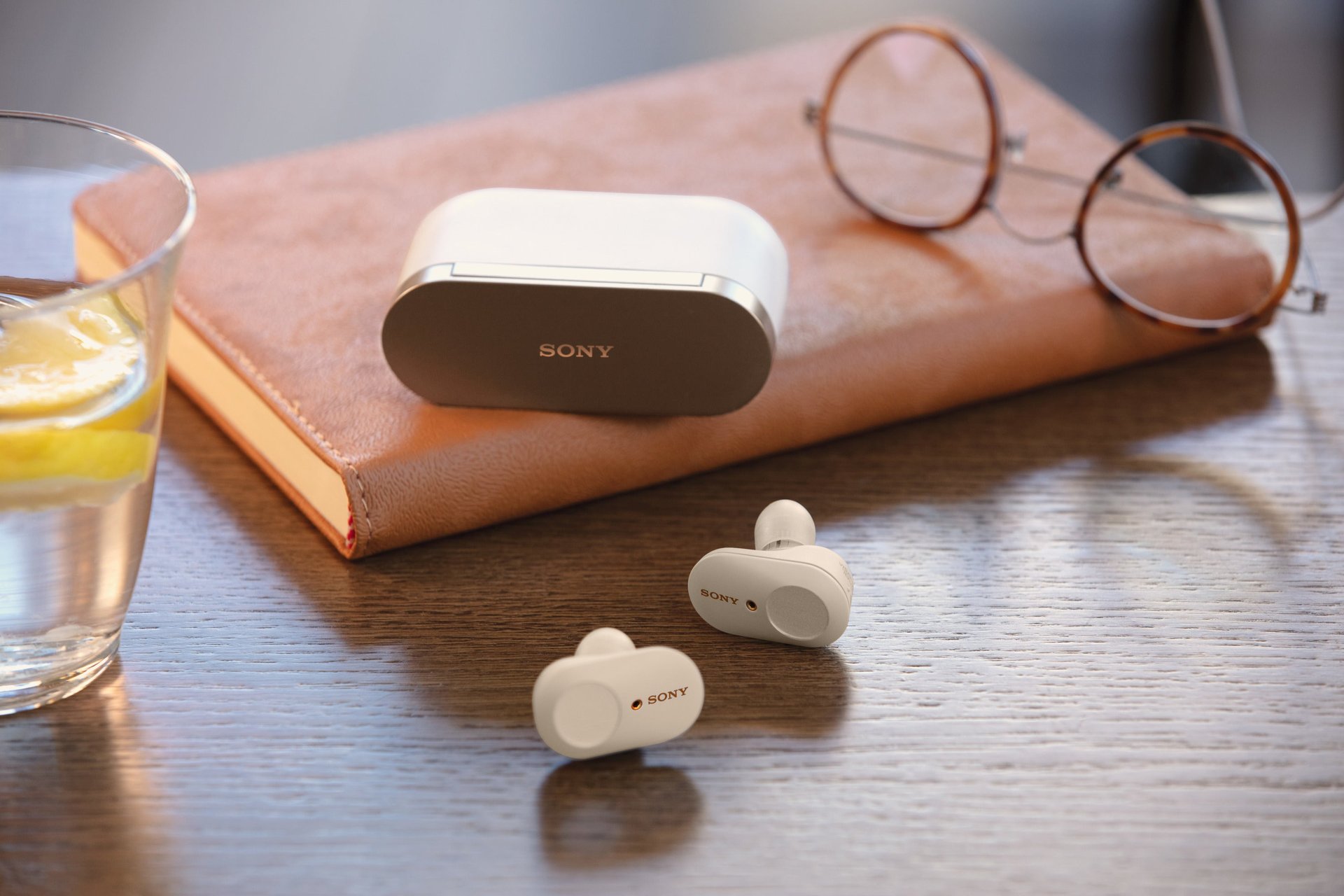Sony’s new wireless noise-canceling earbuds are so close to being perfect
In the space of a few years, Apple’s AirPods have turned the Bluetooth wireless earbud market on its head. Gone are the days of extremely strange one-sided doohickeys and wraparound over-the-neck headphones; in their place are thousands of tiny white stalks sticking out of people’s ears.


In the space of a few years, Apple’s AirPods have turned the Bluetooth wireless earbud market on its head. Gone are the days of extremely strange one-sided doohickeys and wraparound over-the-neck headphones; in their place are thousands of tiny white stalks sticking out of people’s ears.
AirPods became the top-selling wireless headphones only a few months after launching, and their popularity has only grown since then. Now a lot of other gadget makers wants to capitalize on AirPods’ popularity by releasing their own competitor. In most cases, they don’t have much to offer that AirPods don’t. But Sony’s latest earbuds, the eloquently named WF-1000XM3, come with something Apple’s ubiquitous buds do not: noise cancelation.
Will that be enough to sway AirPod owners, or noise-canceling headphone loyalists? Quartz spent the last few weeks testing out the new earbuds.
What’s good
The noise canceling is top notch. A colleague came up to my desk and apparently started talking to me. I didn’t notice at first until I turned my head slightly and saw him standing there; he scared the hell out of me. My commute got a lot quieter, too. New York City subway trains are some of the loudest, screetchiest machines I’ve ever been on. While Sony’s new earbuds don’t entirely cut out their sound (I think nothing short of chopping your ears off would do that), they do make commuting about as pleasant an experience as it can be, noise-wise. When I didn’t have the earbuds with me and I was in loud situations over the last week, I found myself wishing I’d brought them.
Google Assistant is useful. Using these headphones with an iPhone, I’m able to do something I’m rarely able to: speak to a digital assistant who has some real answers for me. Sony’s earbuds, like a small handful of other headphones on the market, allow you to connect directly to the Google Assistant app, which I find is much better at answering my queries than Apple’s Siri.
Automatic detection. Using Sony’s Headphones app, you can control the level of noise-canceling on the earbuds. You can either set this manually, with various levels that let through others’ voices, or you can use Sony’s “Adaptive Sound Control” technology. This basically uses your phone’s GPS and motion to figure out what you’re doing and guess the level of noise canceling you need. It works decently, but it I didn’t leave it on much, as I generally felt like I only wanted as much noise canceling as possible, or none. Leaving GPS on consistently will also drain your battery eventually.
You don’t look quite as ridiculous. I’ve been a fan of Apple’s AirPods pretty much since day one, but it’s hard to argue that the white earbuds don’t look very silly, let alone on people who can’t seem to figure out how they’re supposed to go in. Sony’s earbuds, like many AirPods competitors, went with a different shape, where most of the headphone sits in the middle of the ear, rather than below it. They don’t look quite as obvious in the ears, but if you look closely enough, you do sort of look like Frankenstein’s monster.
What’s not so good
The case is too bulky. The biggest problem with these headphones is the case: It’s too big to fit comfortably in a pocket. It’s about twice as wide as the case for Apple’s AirPods, nearly twice as thick, and twice as heavy (it weighs 2.8 oz, which is double the AirPods’ case). Sony’s earbuds are shaped differently and are doing more than Apple’s with the noise-cancelation feature, but the diminutive AirPods case also holds roughly twice the charge that Sony’s can, with up to 24 hours of charge versus about 15 for Sony’s.
They got irsksome in my ears. This could be a personal issue, but I tried every size of earbud cap that came with Sony’s headphones, and all of them eventually bothered my ear canals at least a little bit. I’m glad that Sony offers so many sizes, but with every size I tried, when I wore them for long periods, I’d have to take them out every so often because they made my ears feel itchy, somehow.
They’re awkward to remove from the case. The way Sony designed the case, there isn’t a lot of clearance between the two earbuds when they’re in the case for a finger to pry them out. The first few times I tried to get the earbuds out, I dropped them on the floor.
Music was occasionally glitchy. It was rare, but there were occasionally streaming issues with the earbuds, where music could sound garbled or tinny for short periods of time.
They’re not cheap. Sony’s headphones will cost you $230, which is a lot for a pair of wireless earbuds, regardless of what they do. For comparison, Apple’s AirPods start at $159, around as much as other well-received competitors.

Should you get them?
If you’re looking for a single set of earbuds that you can carry with you wherever you are, and you care about blocking out the world around you, these are probably the ones for you. But if you’re only interested in noise canceling in specific settings (such as airplanes, trains, or the office), I’d suggest investing in an over-the-ear set of noise-canceling headphones, like Bose’s QC 35 IIs or its new 700 headphones, or Sony’s own WH-1000XM3 headphones. Not only do they provide a bit better noise cancellation than Sony’s earbuds, you can also leave those headphones in a travel bag or on your desk, and opt for a smaller pair of wireless headphones to carry with you for other purposes.
These aren’t Sony’s first wireless earbuds, but they’re a massive step up over the design of its last two models. You have to assume that the Japanese firm will continue iterating until they’re perfect. If it can figure out how to streamline the case a bit more, and make the experience slightly less clunky, Sony could easily challenge anyone in the earbud market.